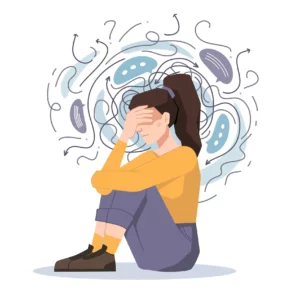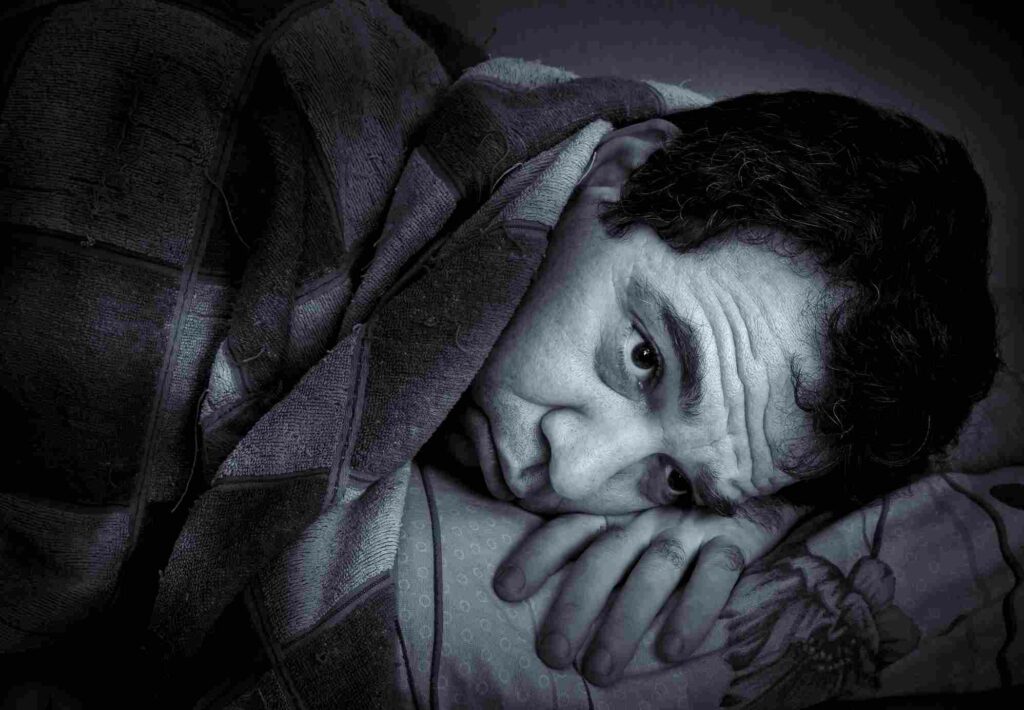Are you struggling with scary thoughts about harming yourself or others, even though you know you wouldn’t really do it? This is a common experience for people with a type of Obsessive-Compulsive Disorder (OCD) called Harm OCD. But guess what? There’s a way to deal with these tough thoughts. Yes! We’re talking about CBT, a special kind of therapy that has helped many people suffering from harm OCD.
Ready to find out more about this therapy and how it can help you with Harm OCD? Keep reading, and let’s discover this together.
Contents
What Is Harm OCD?
 Harm OCD is a type of Obsessive Compulsive Disorder (OCD). In this condition, the sufferer has intrusive thoughts or images of hurting someone else. These thoughts might involve physical or emotional harm, and they can be very distressing for those who experience them.
Harm OCD is a type of Obsessive Compulsive Disorder (OCD). In this condition, the sufferer has intrusive thoughts or images of hurting someone else. These thoughts might involve physical or emotional harm, and they can be very distressing for those who experience them.
People with Harm OCD often feel guilty or ashamed because of these disturbing thoughts, but it’s important to remember that having these thoughts does not make you a bad person. In this condition, the thoughts are involuntary, and they don’t reflect who you truly are.
Do I Have Harm OCD? – A Self-Assessment Test
If you’re wondering whether you might be experiencing Harm OCD, this self-assessment test can help you understand your symptoms better.
Answer each question honestly to get the most accurate insight.
- Do you frequently have unwanted thoughts about causing harm to yourself or others?
Like- imagining harming a family member while holding a knife, even though you don’t want to? - Do thoughts of causing accidental harm, like pushing someone in front of a bus, cause you significant anxiety or distress, even though you have no intention of doing it?
- Do you find it difficult to control or dismiss these harmful thoughts?
- Are you worried that these thoughts mean you will act on them?
- Do you avoid situations like playing with younger siblings or interacting with others because you fear you might harm them, despite knowing deep down you wouldn’t?
- Do you engage in behaviors or rituals to prevent these thoughts or to ensure you don’t act on them?
- Have these thoughts and behaviors begun to interfere with your daily activities, like work or socializing, causing you to avoid normal situations?
- Do you spend a considerable part of your day worried about these harmful thoughts, affecting your ability to concentrate or enjoy life?
- Have you avoided certain situations or activities because they trigger these harmful thoughts?
- Do you often need reassurance from others about these thoughts?
- Are you reluctant to share these thoughts due to feelings of shame or fear of being misunderstood?
If you’ve found yourself answering “Yes” to several of these questions, you might be dealing with Harm OCD. **Remember, this test is not a professional diagnosis but can guide you towards understanding your experiences.**
Is It Even Possible To Overcome Harm OCD?
 Overcoming Harm OCD might seem like a daunting task, especially when you’re in the midst of dealing with its challenging symptoms. However, the good news is that it is indeed possible to overcome this form of OCD.
Overcoming Harm OCD might seem like a daunting task, especially when you’re in the midst of dealing with its challenging symptoms. However, the good news is that it is indeed possible to overcome this form of OCD.
- There are proven, effective treatments available for Harm OCD. Cognitive-behavioral therapy (CBT), particularly Exposure and Response Prevention (ERP) & Mindfulness Based CBT has shown significant success in treating OCD.
- Moreover, for some, medication can be an effective part of treatment, especially when combined with therapy. Medications like SSRIs have been shown to reduce the symptoms of OCD, making it easier to engage in and benefit from therapy.
Therefore, while Harm OCD is a complex and challenging disorder, overcoming it is possible. With the right treatment, support, and resources, individuals can learn to manage their symptoms and lead healthier, more fulfilling lives.
What Is Cognitive Behavioral Therapy (CBT)?
Cognitive Behavioral Therapy (CBT) is a type of psychotherapy. It is helpful to treat mental health conditions, including OCD. It works by helping you to identify negative thoughts or beliefs and replace them with more positive ones. CBT can help you regain control over your obsessive thinking patterns and learn how to cope with distressing situations.
Conclusion
In conclusion, CBT is an effective treatment for Harm OCD and can help you gain control over your intrusive thoughts. Through cognitive restructuring, guided meditation thought records, and identifying negative thoughts, as well as learning behavioral training and mindfulness and relaxation techniques, you can learn how to manage your condition. Therefore, with the right guidance and support, CBT can be a powerful tool in helping you overcome Harm OCD.
For more information and guidance, please contact MantraCare. OCD is a mental health disorder characterized by obsessions and compulsions. If you have any queries regarding Online OCD Counseling experienced therapists at MantraCare can help: Book a trial OCD therapy session




